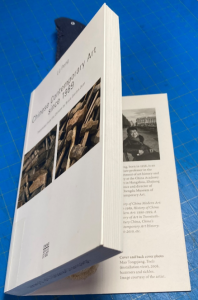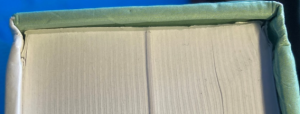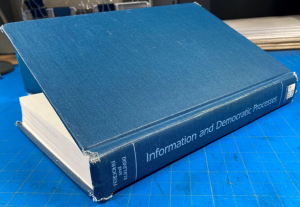Written by Emilye Lewin, Preservation Reformatting, Collections Care, and Digitization Services hourly employee
When books become too brittle or damaged to circulate, they are routed to Preservation Services so that a preservation decision can be made. While the Library is committed to building and sustaining library collections for the use of students, faculty, visiting scholars, and the public, the physical and chemical compositions of many items actively work against this goal. Books become worn with time, so to combat degradation, the Preservation Reformatting department reformats these items to ensure they can be used by patrons without undergoing further damage. Today, reformatting takes the form of digitization, but this was not always the case. The timeline below shows the different forms reformatting has taken over the years to illustrate how librarians and preservationists have provided access to damaged materials.
Reformatting: The Early Years
1851 Daguerreotypes suggested for preservation
1920s Commercialized for preservation and widespread use
1930s Newspaper preservation begins plagued by quality control issues like lighting, contrast, film stock quality, etc.
1935 Microfilm is introduce – Microfilm rose in popularity when Recordak, a division of Kodak, used a 35mm microfilm camera to film and publish the New York Times on microfilm. Microfilm quickly became a solution to the many preservation and storage issues inherent in newspaper collections and government documents.
1971 Project Gutenberg – Volunteer effort to digitize and archive cultural works. Created by a former University of Illinois student.
Contemporary Reformatting Projects at UIUC
Because polyester film has a life expectancy of at least 500 years, we still use microfilm as a means of best preservation practice today. The microfilm itself is often considered to be the preservation copy, while digital files are created from the microfilm as access copies to be used by the public. The timeline below shows how microfilm projects at UIUC have evolved into digitization projects.
1982 United States Newspaper Project. Started at UIUC in 1987 as a partnership between UIUC, the Chicago History Museum, and the Abraham Lincoln Presidential Library. We have cataloged over 20,500 newspaper titles and resulted in the creation of the Illinois Newspaper Project Database so patrons can access newspapers digitally.
2004 Microfilm Goes Digital – National Digital Newspaper Program. The goal of this project is to enhance accessibility of innovative newspaper content for researchers and scholars. UIUC is currently focused on selecting items that represent a wide variety of geographic, temporal, and demographic groups, specifically labor, African American, and non-English language newspapers.
2004 Google Books -Joint partnership with prominent research libraries in order to build a shared digital repository combining digitized public domain materials from each library’s individual collection into one easily accessible online resource. Public domain materials are available to view, search, or download while only basic information (such as title, author’s name, and a few lines of descriptive text) are provided for items protected by copyright laws.
2014 Internet Archive Partnership – As part of a partnership and customized preservation workflow, Internet Archive staff are located inside the Main Library and perform in-house digitization. This is a unique reformatting workflow as it ensures Library materials never leave the building. Internet Archive has digitized over 16,000,000 eBooks and growing, with over 73,000 books from UIUC.








